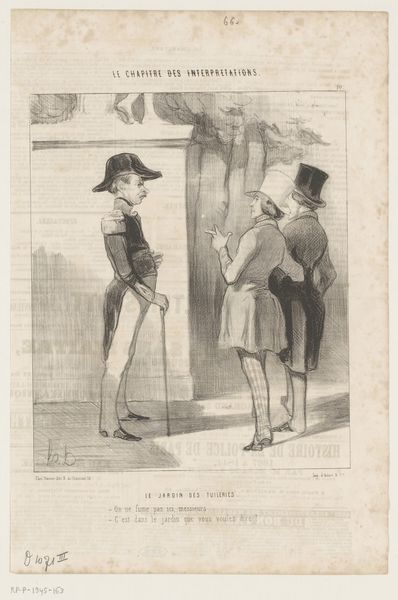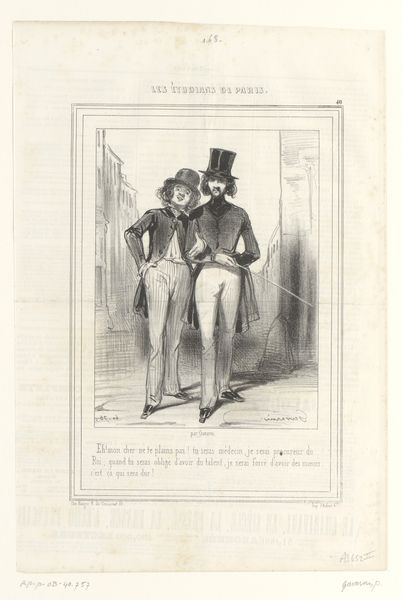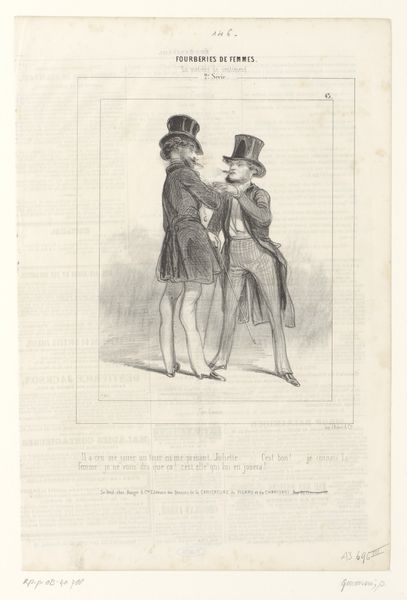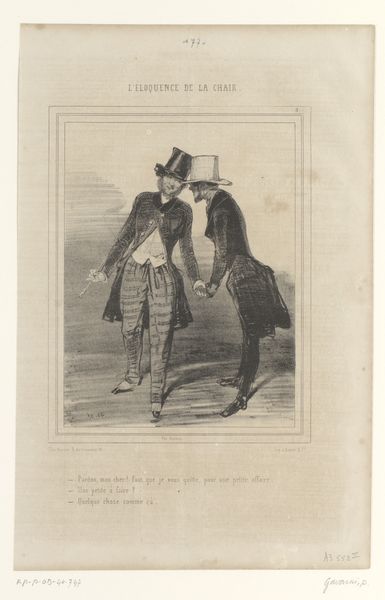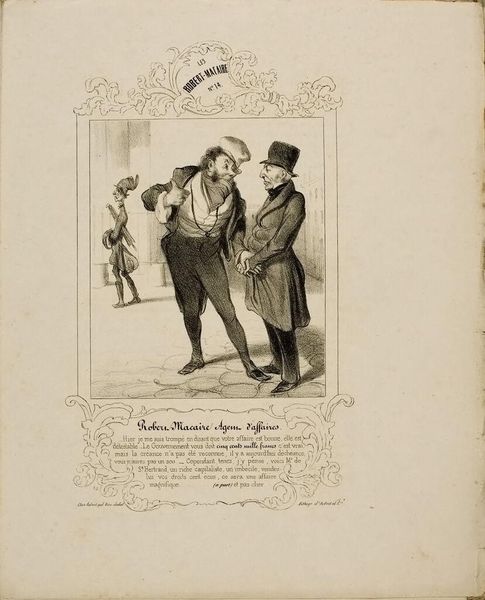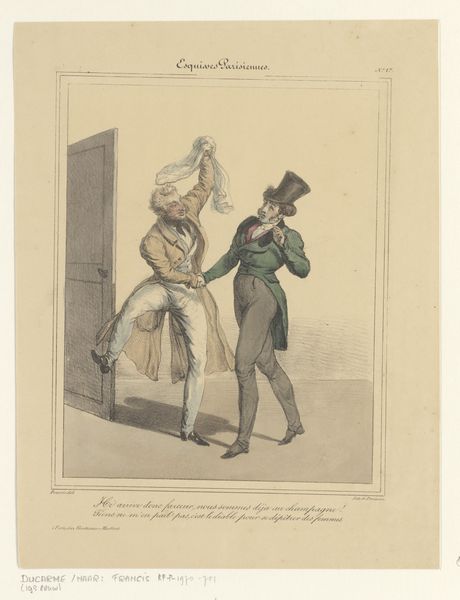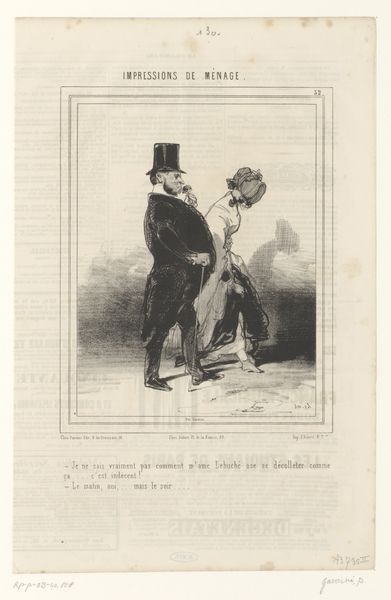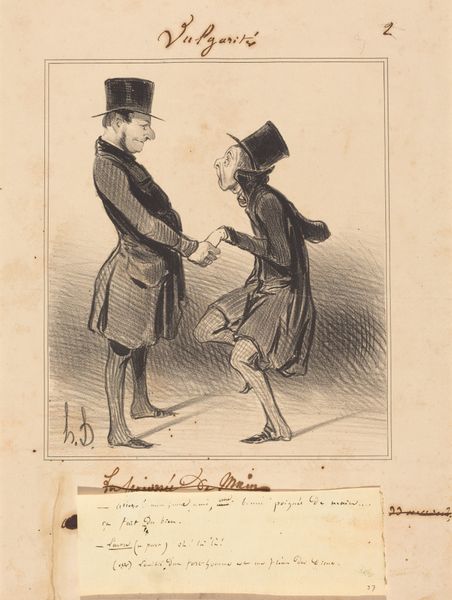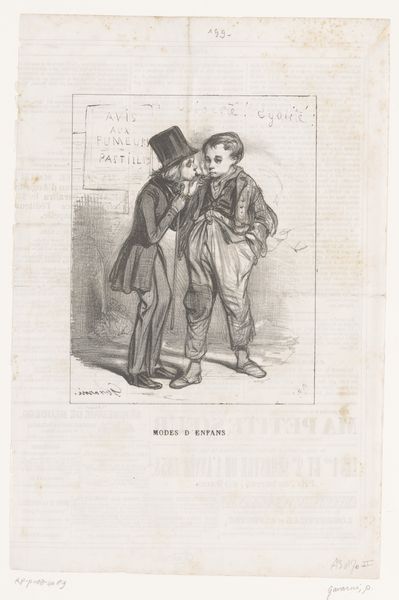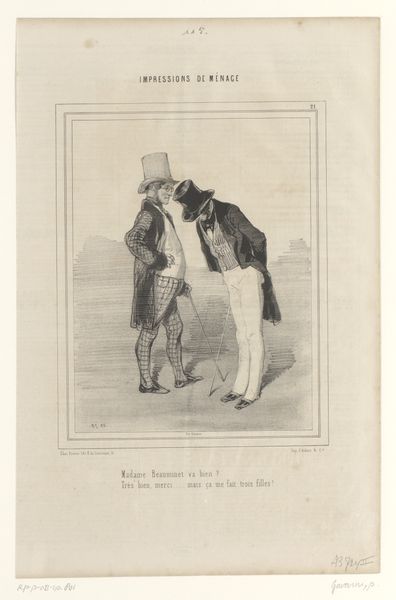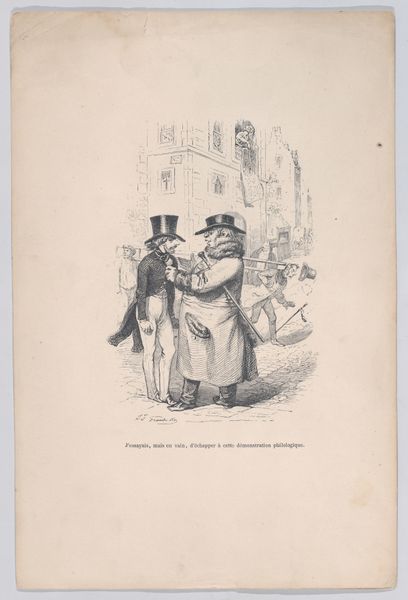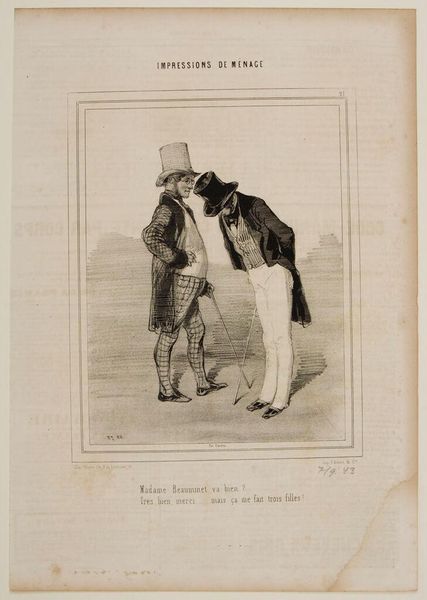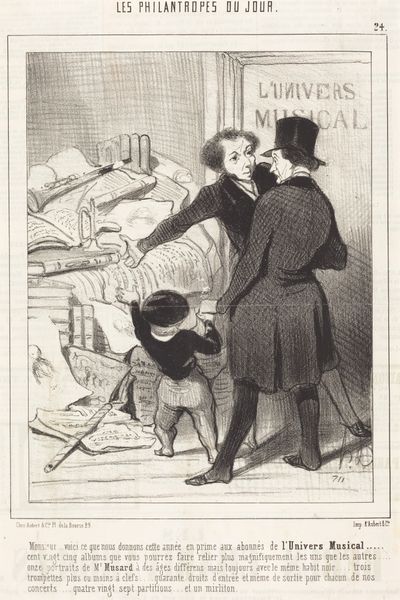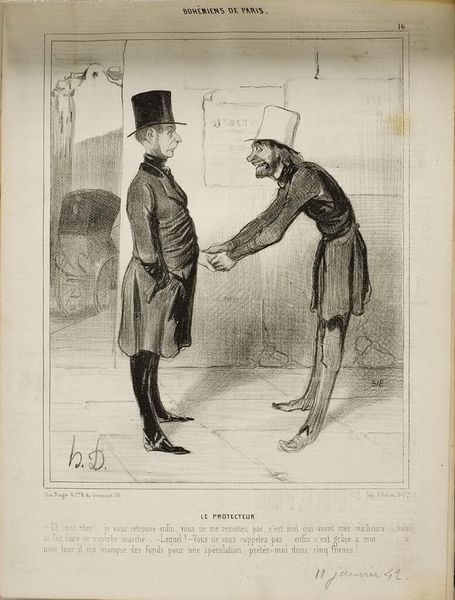
Robert: “- Well, well! My dear director... how's business?” Bertrand: “- Good, very good, I am quite content. Unfortunately we don't have a penny to continue! - Oh blast! - But an investor still owes us 200,000 Francs... and will come up for signature either tonight or latest tomorrow morning. - About time... I urgently need a new pair of boots,” plate 6 from Robert Macaire 1841
0:00
0:00
drawing, lithograph, print, paper
#
portrait
#
drawing
#
16_19th-century
#
lithograph
# print
#
caricature
#
figuration
#
paper
#
historical fashion
#
france
#
19th century
#
watercolour illustration
#
genre-painting
#
history-painting
Dimensions: 357 × 277 mm
Copyright: Public Domain
Honoré Daumier created this lithograph as part of his "Robert Macaire" series in 19th-century France, a period marked by rapid industrialization and financial speculation. Daumier uses the character of Robert Macaire to critique the social structures of his time. Macaire, a notorious swindler, embodies the greed and moral bankruptcy that Daumier saw as pervasive in the bourgeois society of post-revolutionary France. Here we see him in conversation with Bertrand who refers to the desperate state of his business. With visual cues such as dress codes, the artist highlights the relationship between the class and their economical power. The artwork subtly critiques the July Monarchy and its policies, reflecting Daumier's republican political beliefs. To understand the full impact of Daumier’s image, one might consult sources such as contemporary newspapers and political pamphlets. These resources would provide insights into the social and institutional contexts that shaped both the creation and reception of his work. The art historian's role is to reveal art as a product of its time.
Comments
No comments
Be the first to comment and join the conversation on the ultimate creative platform.
